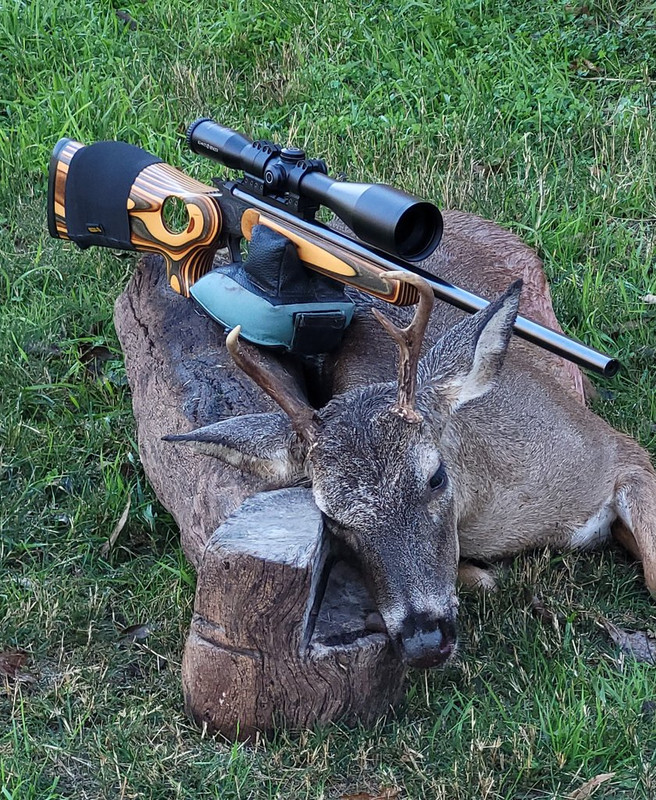Well, I've had a few chances for a 2.5 year-old 3-point that has been hanging around, and this morning I finally took advantage. Really wanting to see what the Barnes 115 grain Tac-Tx bullet would do, I waited until the buck's foreleg was forward and was able to place the Barnes, which leaves the muzzle at 2615 fps, in the sweet spot on the slightly-quartering-to-me presentation. I wanted to steer clear of the shoulder because I didn't want secondary bone fragments to contribute to the wound channel and give a false impression of the terminal performance.
The range was only 130 yards. At the shot, the buck bolted to his left and quickly did a nose-plow about 40 yards from where he originally stood. The Barnes bullet broke a rib on entry, wrecked the lungs and departed with an exit that was slightly larger than a quarter. The cookie-cutter pattern on the ribs indicates the bullet had opened quite well. While the bullet's path did not take it through the liver, it was notably damaged by the hydrostatic shock and even partially split.
So far, I'll say I am pleased with what I've seen from the bullet, which was designed for the speeds of the Grendel. I've taken a few hogs with the 6.5 BRM and this bullet, but I really wanted to see how it would do on a ribcage shot on a thin-skinned animal. I do wish it opened more like the two Blackout offerings in .30 caliber, but even so, it is much better than the typical Barnes TSX or TTSX at these speeds.
Also, when it comes to impacts with moderate velocities, some people say "shoot for the shoulder" with Barnes bullets to facilitate better expansion. That is not necessarily the best advice. These bullets are designed to open with soft tissue and fluid. They were designed to shoot through barriers (hard surfaces) without deflecting, and my testing over the years bears this out. Shooting through bone doesn't do anything but slow it down and may actually hinder further expansion. Yes, you'll get the benefits of bone being driven through the vitals. But don't bank on bone to necessarily contribute to the expansion of a Barnes bullet.








 Reply With Quote
Reply With Quote
Bookmarks